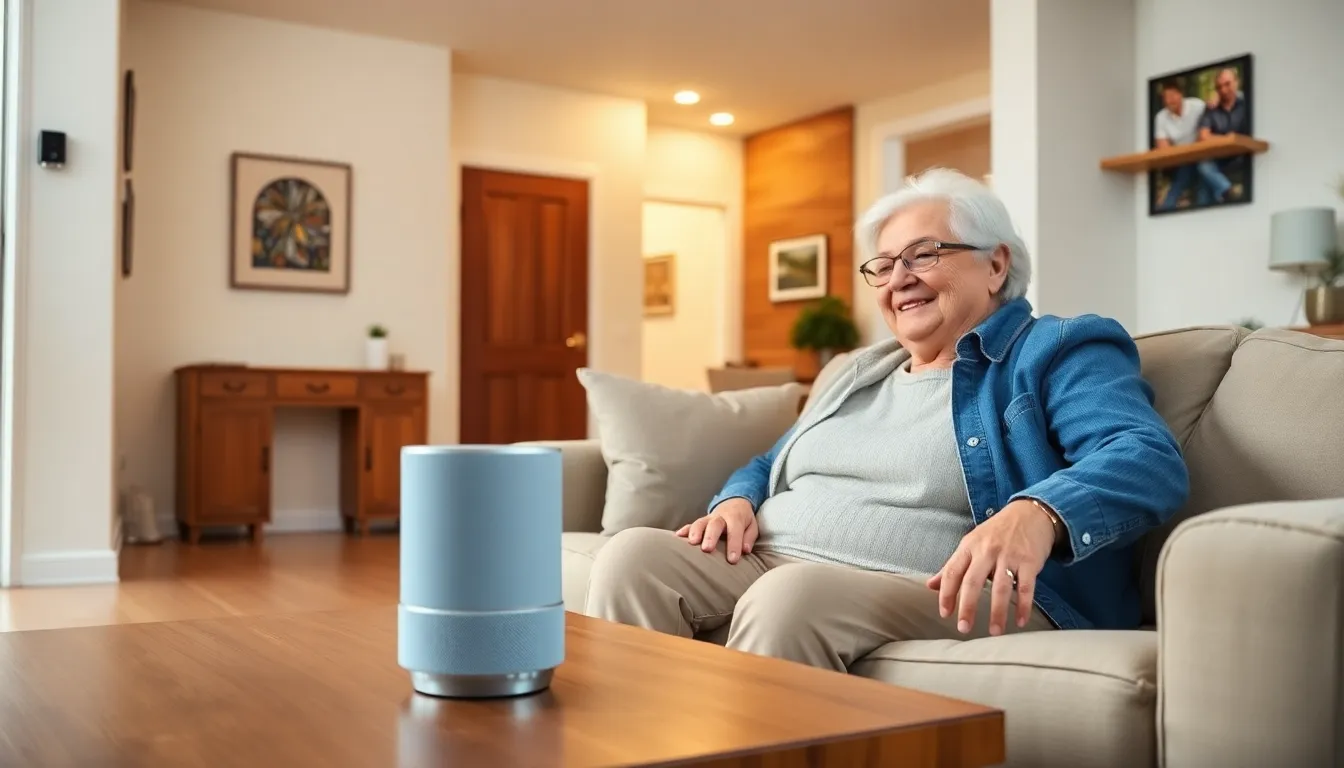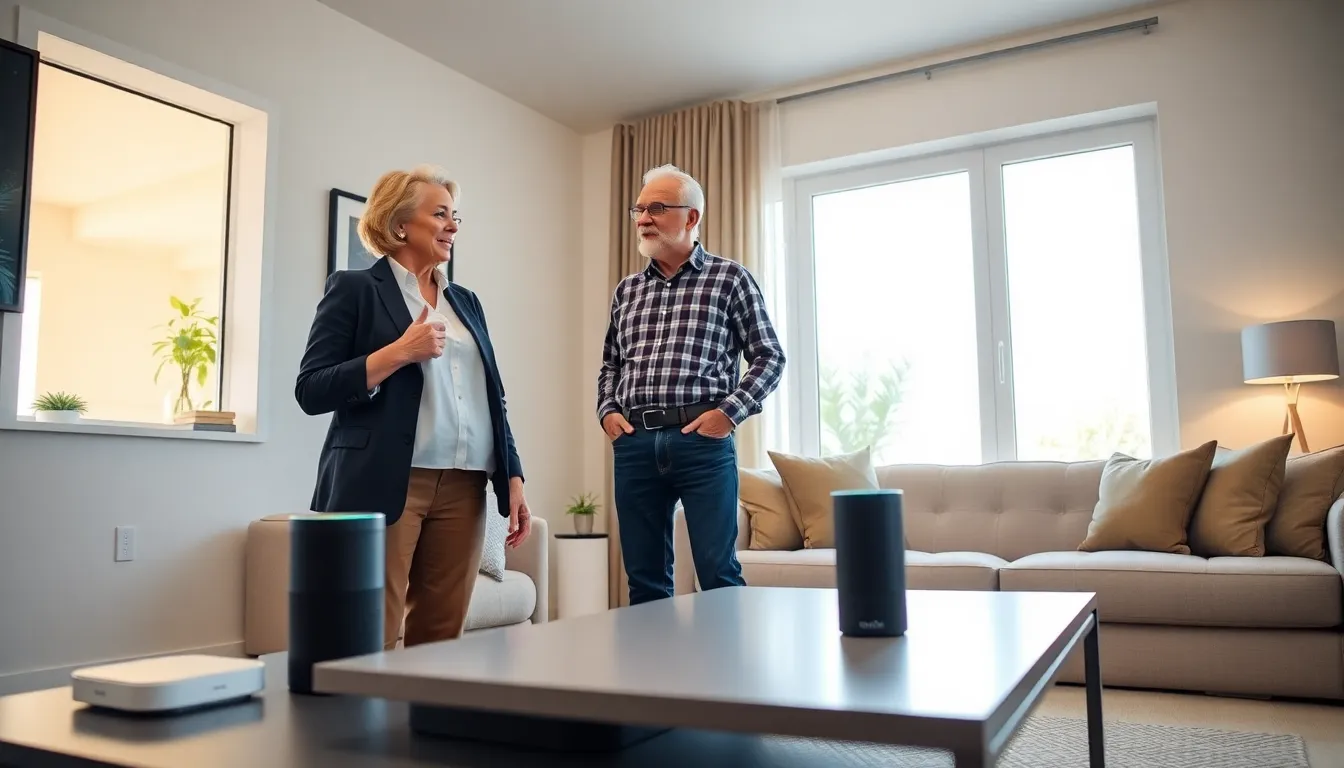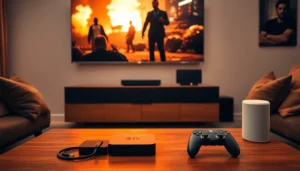Imagine a world where seniors live comfortably, securely, and with a sprinkle of tech magic. Smart home devices are making a grand entrance into the lives of older adults, transforming their homes into high-tech havens. It’s not just about turning on the lights with a voice command or controlling the thermostat from a couch: it’s about enriching lives, enhancing safety, and ensuring independence. Plus, who wouldn’t want to impress their grandkids with their newfound tech skills? Let’s jump into how these nifty gadgets can change the game for seniors.
Table of Contents
ToggleBenefits Of Smart Home Technology For Seniors

Enhancing Safety And Security
Smart home technology provides crucial safety enhancements for seniors. Imagine an automatic lighting system that brightens up pathways as someone walks by. This feature reduces the risk of falls during late-night trips to the restroom. Also, smart security cameras and doorbell systems allow seniors to monitor who’s at their door without getting up, offering peace of mind. Some systems even alert family members if an unusual event occurs, ensuring extra vigilance on the senior’s behalf.
Increasing Independence And Convenience
Smart devices significantly boost independence, allowing seniors to perform daily tasks more easily. Voice-controlled smart assistants enable them to set reminders for medication, make calls to family, or simply ask for the weather, all without needing to struggle with complicated technology. Automation of tasks such as adjusting lighting or changing thermostat settings means seniors can maintain comfort while remaining in control of their environment.
Examples Of Smart Home Devices
Smart Assistants And Voice-Controlled Devices
These devices, such as Amazon Alexa or Google Home, are the digital companions everyone needs. With just a voice command, seniors can play their favorite music, hear the latest news, or even order lunch. The convenience of hands-free technology simplifies life drastically, reducing reliance on others and increasing personal agency.
Home Monitoring Systems
Remote monitoring systems have become essential tools for caregivers. These systems allow family members to check on the well-being of their loved ones in real-time. Features such as motion sensors or activity trackers can alert family members to potential issues, allowing for timely responses to emergencies while still respecting the senior’s privacy.
Wearable Health Devices
Health monitoring wearables, like fitness trackers or smartwatches, are all the rage. They help track vital signs and physical activity levels, providing valuable insights into a senior’s health. Some devices can even send alerts if they detect falls or abnormal heart rates, turning a simple gadget into a lifesaver.
How To Choose The Right Smart Home Devices
Assessing Individual Needs And Preferences
Every senior is unique, and their smart home setup should reflect that. It’s essential to assess what specific needs might arise. Does the elderly person need assistance with remembering medications? Or maybe they require a home security system to feel safe? Choosing devices that address personal requirements can lead to a more satisfying experience.
Considering Compatibility And Integration
Not all smart devices play nicely together. When selecting options, check if they can work with existing technology. A smart home ecosystem that communicates effectively can make setup and daily use seamless. For instance, devices that integrate with the same platform can be controlled from one app, simplifying life even further.
Best Practices For Setting Up Smart Home Devices
User-Friendly Interfaces And Training
No one wants to struggle with a complicated setup process. Choosing devices that boast user-friendly interfaces makes them more accessible for seniors. It’s wise to provide some initial training, like a hands-on demonstration of how to use the devices. With a little practice, many seniors can adapt surprisingly well.
Ensuring Ongoing Support And Maintenance
Smart home technology can sometimes be prone to glitches just like any tech. Establishing a support system for troubleshooting can alleviate potential frustrations. Whether that’s setting up a family member to assist occasionally or enrolling in service plans that offer tech support, ensuring seniors can maintain their smart devices is crucial for long-term happiness.



